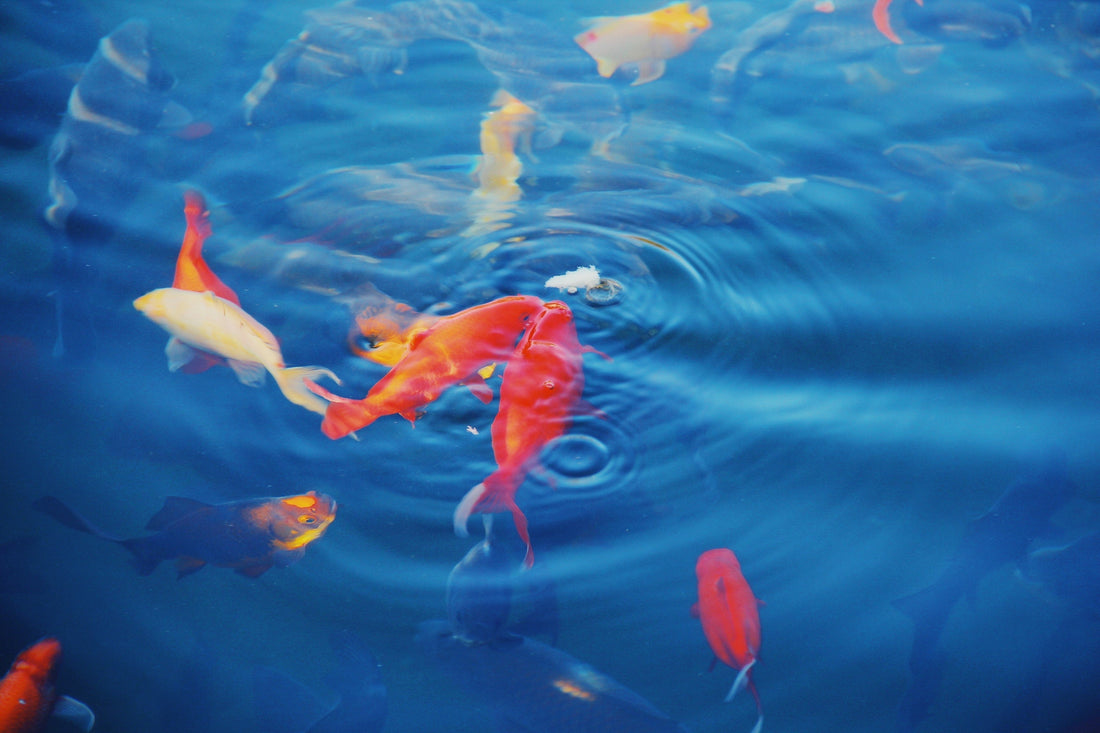
Feeding mealworms to fish: Nutritional benefits for koi, tropical, and marine aquariums
Share
Aquarists increasingly choose feeding mealworms to fish because mealworms mimic natural prey and add high-quality protein, fats, and enrichment to the diet. Many popular species, including koi and cichlids, are omnivores or carnivores in the wild. Insects make up a large part of their natural diet, so mealworms provide both nutrition and stimulation.
For a sustainable, DIY option, consider homegrown mealworms. You control the feed and hygiene, and you can serve them live, dried, or chopped to suit different fish sizes.

Nutritional benefits of mealworms for fish
Mealworms for fish (Tenebrio molitor) are rich in protein (about 47–60%) and lipids (about 31–43%) on a dry-weight basis. They also contain essential amino acids and fatty acids that support growth, coloration, and immune health. A NOAA study on black sea bass reported improved growth when replacing 25% of fishmeal with mealworms. A recent review in a nutrition journal found that insect ingredients enhance feed efficiency, antioxidant activity, and immune response across aquaculture species. These findings support the nutritional benefits of mealworms for fish and validate their role as a sustainable partial alternative to fishmeal.
Growing mealworms for fish food at home
Growing mealworms for fish food is simple and cost effective. Keep them on wheat bran or oats with vegetable moisture sources like carrots or squash. Raise them in small stacked containers to save space. Harvest sizes to match your stock: chop for small fish and feed whole to larger species. Serve freshly molted mealworms to improve digestibility because their softer exoskeleton contains less chitin.
How to gut load mealworms
Gut loading mealworms boosts vitamins and minerals for your fish. Feed mealworms leafy greens, carrots, apples, and enriched grains for 24–48 hours before use. Keep the medium dry to avoid mold. Serve soon after gut loading to deliver maximum nutrition.

Mealworms for koi and other pond fish
Mealworms for koi make a high-protein, high-energy treat and stimulate natural foraging behavior at the surface. Feed more often to young koi in warm months and use moderation with mature fish because of the higher fat content. Prefer freshly molted worms and avoid overfeeding to reduce digestion issues associated with chitin.
Mealworms for tropical fish
Mealworms for tropical fish diversify community tank diets and increase engagement at feeding time. Cichlids, gouramis, and many tetras accept them readily. Cut pieces to fit the smallest resident so the whole community benefits. Rotate with quality pellets, flakes, and other live foods for balance.
Mealworms for saltwater aquarium fish
Mealworms for saltwater fish work as an occasional treat. Marine systems are sensitive, so keep mealworms as a supplement rather than a staple. Offer small, infrequent portions to add variety and enrichment without displacing marine-specific nutrition.
Practical feeding tips
- Use mealworms as a supplement, not the sole diet.
- Gut load for 24–48 hours before feeding.
- Serve freshly molted worms for easier digestion.
- For koi: feed more in warm months; moderate portions for mature fish.
- For tropical tanks: chop to size so all species can eat safely.
- For marine tanks: feed sparingly once or twice a week at most.
Key takeaways
- Feeding mealworms to fish provides protein, fats, and enrichment.
- Nutritional benefits of mealworms for fish include growth support and immune health.
- Growing mealworms for fish food at home is sustainable and cost effective.
- Gut loading mealworms increases delivered micronutrients.
- Mealworms for koi, tropical, and saltwater fish each offer benefits when fed appropriately.
Author bio
Written by an aquarist and aquaculture researcher with a background in sustainable feed alternatives. Combines hands-on experience in raising koi and tropical fish with research into insect-based nutrition to provide practical, evidence-based feeding advice.
